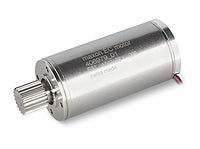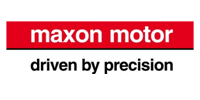
The flawless launch of the SpaceX Falcon 9 rocket on 22 May 2012 is another successful step for maxon motor in the use of high precision motors in the astronautics industry. The crucial tasks of the maxon motors in the SpaceX mission included orienting the solar arrays of the Dragon spacecraft towards the sun to provide the power supply.
The first private cargo capsule in the history of space travel was launched into space on 22 May 2012 from the Cape Canaveral Air Force Station in Florida, US. The voyage of the unmanned ‘Dragon’ spacecraft, developed by the Californian company SpaceX, was a historical event for all involved. Never before has a private company developed a combined spacecraft and launch system that is capable of undertaking an orbital rendevous and then returning to earth.
Brushless maxon motors for mission-critical tasks
EC maxon motors were used on the voyage to the ISS to rotate the solar arrays to keep them aligned with the sun as Dragon orbited the earth, open the instrument bay door which contains navigation equipment, and lock in place the fixture that allows Dragon to be grappled by the space station’s robotic arm.
On 25 May 2012, astronaut Donald Pettit successfully used the 17.6m robotic arm of the ISS to grapple the Dragon and guide it to the docking point on the space station. The 4.4m tall Dragon spacecraft supplied 520kg (1,146lbs) of scientific equipment and food to the ISS. On 31 May the 6t capsule detached from the ISS and splashed down under parachutes in the Pacific Ocean off the coast of California on the same day. The capsule was returning 660kg (1,455lbs) of material from the ISS. Now that NASA has phased out its space shuttle program, the Dragon is the only means of transporting such large quantities of material back to earth.
The maxon team has been working on the SpaceX motor project for the last year. This is a milestone in the history of maxon, and the story isn’t over yet, as NASA has contracted with SpaceX for another 12 flights to the ISS. In a few years, the spacecraft will carry seven astronauts to the international space station.
For maxon motor, this latest flight is a major step forwards in the future of commercial aerospace applications. With the Mars rovers Opportunity and Spirit, maxon motor has previously demonstrated that maxon motors function flawlessly, even in outer space and on other planets.
"We recognised the significance of what SpaceX were trying to achieve when they first approached us for motors several years ago. Our participation demonstrates that our standard industrial motors now have the technological sophistication that enables them to function in the critical roles needed for the success of this ground-breaking mission," explained Robin Phillips and Kornelia Stubicar, the two managers of the SpaceX motor project at maxon who, together with their team, implemented the development of the Dragon motors.

